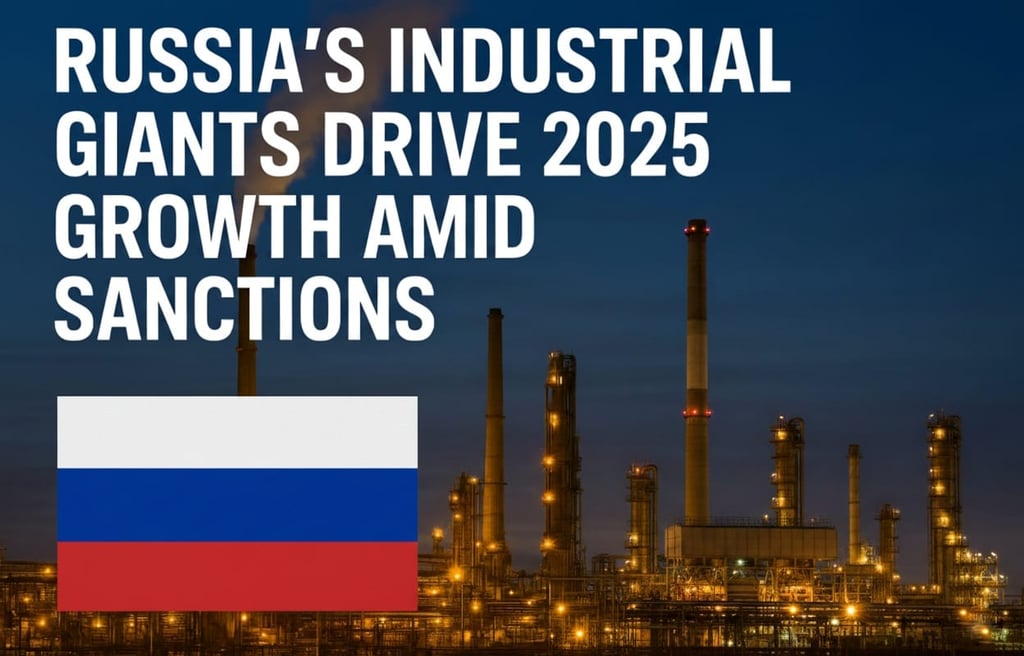Russia’s Industrial Growth 2025: Gazprom, Rosneft, and Rostec Strengthen Output Amid Sanctions
Russia’s top companies — Gazprom, Rosneft, and Rostec — expand exports and industrial strength in 2025, focusing on Asia amid global sanctions.
Raja Awais Ali
10/9/20252 min read


Russia’s Industrial Titans Rise: Moscow’s New Era of Economic Power
Russia’s economy is entering a new, strategically focused phase as the country’s leading industries continue to show resilience despite ongoing Western sanctions and global market challenges.
Recent reports from Moscow highlight steady growth in key sectors such as energy, defense manufacturing, and heavy industry, supported by strong demand from Asia and other non-Western markets.
Major corporations including Rostec, Gazprom, Rosneft, and Severstal have each expanded production capacity and announced new projects aimed at strengthening Russia’s self-sufficiency.
According to Rostec officials, the company has launched several initiatives in defense technology, aviation systems, and industrial machinery, many of which are attracting interest in Asia, Africa, and the Middle East.
Gazprom has deepened its partnerships with China and India, with new long-term gas supply agreements signed earlier this year. Russia’s Energy Ministry reports growing exports through the Power of Siberia pipeline and plans to expand LNG shipments from Arctic and Sakhalin projects.
Meanwhile, Rosneft continues to modernize its oil facilities through automation and digital monitoring systems, aiming to enhance output and operational efficiency.
Severstal, one of Russia’s major steel producers, has maintained stable export levels despite sanctions, focusing on trade with Turkey, Iran, and China to offset European market losses.
Rostec CEO Sergey Chemezov emphasized that Russia is committed to strengthening industrial independence by developing domestic technologies and reducing reliance on Western suppliers. This strategy aligns with Moscow’s broader import-substitution agenda, designed to increase local production of critical components and defense materials by 2030.
Economic analysts say these developments show that Russia’s industrial base remains adaptive rather than collapsing under sanctions pressure.
According to Alexander Shirov, Director of the Institute of Economic Forecasting at the Russian Academy of Sciences, “Russia’s economic model is shifting toward greater domestic production and diversified export markets — particularly in Asia.”
President Vladimir Putin recently reaffirmed his government’s long-term commitment to industry and innovation:
“Russia’s strength lies in production, technology, and self-reliance. We will continue to support our industries through targeted incentives, investment programs, and tax relief.”
Despite international restrictions, Russia’s industrial sector continues to evolve — blending innovation, state support, and global partnerships to redefine its position in the world economy.